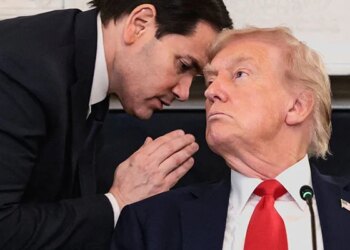Select Language:
In a surprising turn of events within the AI industry, OpenAI CEO Sam Altman revealed that several major collaborations are in the pipeline, even as Nvidia’s CEO Jensen Huang expressed astonishment over AMD’s recent billion-dollar deal with OpenAI. This deal, announced shortly after Nvidia disclosed a plan to invest up to $100 billion into the artificial intelligence firm, signifies a complex web of strategic partnerships shaping the future of AI computing.
During a Wednesday interview on CNBC, Huang was asked whether he was aware of AMD’s transaction with OpenAI prior to its announcement. His response was simple: “Not sure.” Meanwhile, TechCrunch reported that AMD’s agreement with OpenAI is notably unique. According to the terms, AMD plans to grant OpenAI a significant stake—potentially up to 10% of the company’s shares over several years, contingent on stock performance. In return, OpenAI is expected to assist in developing AMD’s next-generation AI GPU chips, effectively positioning the AI company as a shareholder in AMD.
In stark contrast, Nvidia’s involvement comes through direct financial investment, making it an equity holder in OpenAI. Although OpenAI has long relied on Nvidia hardware via cloud service providers like Microsoft Azure, Oracle OCI, and CoreWeave, Huang clarified that this marks Nvidia’s first direct product sale to OpenAI. He emphasized that Nvidia will continue supplying GPUs and infrastructure components to major cloud providers, but their direct sales to OpenAI are a significant shift. These offerings include not only hardware but entire AI systems and networking equipment, aimed at preparing OpenAI for a transition to becoming a “self-hosted hyperscaler”—operating entirely through its own data centers.
Huang acknowledged that OpenAI currently lacks the financial resources to fund the massive infrastructure they require. He estimated that constructing a single gigawatt-scale AI data center could cost between $50 and $60 billion, factoring in land, power, servers, and other essential equipment. To date, OpenAI has committed to building a total of 10 gigawatts of data center capacity in the U.S., thanks to partnerships worth approximately $500 billion with Oracle and SoftBank under their “Stargate” plan. Additionally, they’ve inked a $300 billion cloud computing deal with Oracle.
OpenAI’s partnership efforts extend further, with collaborations covering at least 10 gigawatts of AI data center capacity with Nvidia and around 6 gigawatts with AMD. The company is also expanding in the U.K. through the “Stargate UK” project to build data centers across Europe, with estimates suggesting that upcoming agreements could total nearly $1 trillion in value this year.
However, the industry has voiced concerns about the nature of these transactions. Critics have labeled Nvidia’s investment as a “circular deal,” arguing that Nvidia is essentially financing OpenAI’s hardware procurement while gaining equity in the startup—a strategy viewed by some as a conflict of interest.
Meanwhile, Altman’s discussions with Andreessen Horowitz’s flagship podcast shed more light on the company’s plans. Ben Horowitz praised OpenAI’s approach to securing hardware and infrastructure funding, highlighting the company’s innovative use of strategic partnerships to continually access billions of dollars worth of equipment without single-handedly bearing the costs.
When asked about upcoming collaborations, Altman promised more announcements in the coming months. He expressed confidence that OpenAI’s future models and products will vastly surpass current capabilities, generating heightened demand for their offerings. “It’s time for a very aggressive infrastructure push,” he declared.
Despite the rapid growth of OpenAI’s revenue—reportedly reaching $4.5 billion in the first half of 2025, equivalent to roughly 32 billion yuan—Altman acknowledges the massive scale of investment still needed, potentially reaching hundreds of billions of dollars for data centers alone. Yet, he remains optimistic, stating, “I’ve never been more confident in our research roadmap and the economic value our future models will bring.”
However, he emphasized that OpenAI cannot achieve this vision alone. “We’re going to need the support of the entire industry—or at least a significant part of it—covering everything from essential electronics to model deployment,” Altman said. He anticipates additional deals and partnerships are on the horizon in the coming months as the AI landscape continues to evolve rapidly.





